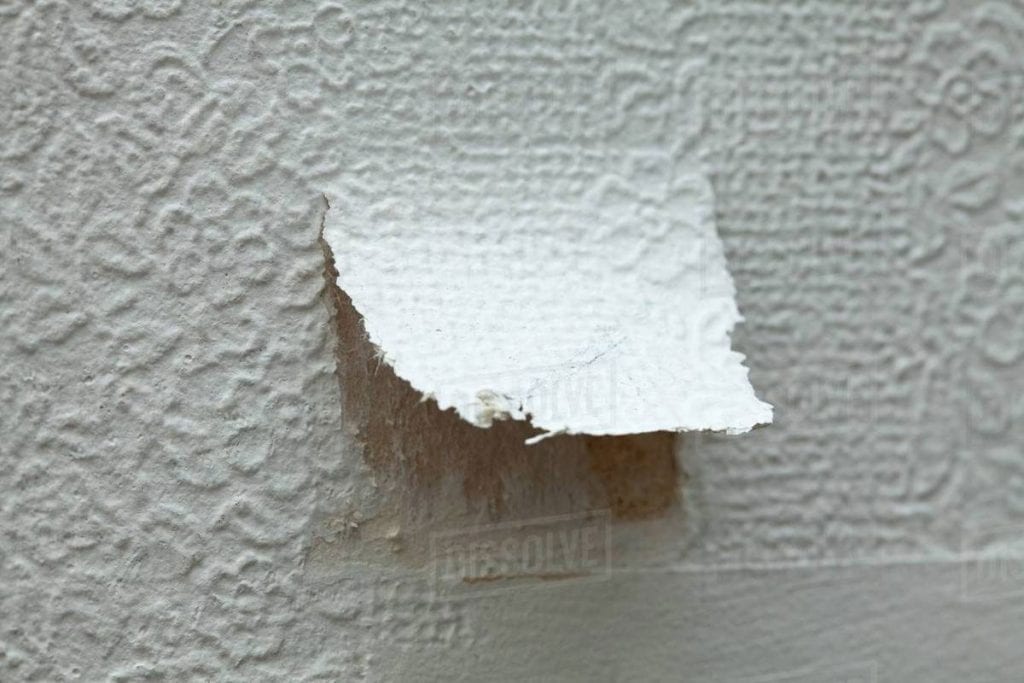Your perfect decorating project has sustained damage. Here’s what you can do to repair it.
By Diane Franklin
You’ve put time and money into making your home environment the best it can be—a fresh coat of paint, a room adorned with the latest wallpaper, new flooring throughout the house. It looks absolutely perfect. Then something terrible happens. A hole in your drywall. A tear in the wallpaper. Scratches in your hardwood floor. A section of carpet shredded by your cat.
Your surroundings are no longer perfect, and you have to spring into action. Here are suggested remedies for repairing the damage.
Holes in the Wall
Minor dents in drywall can easily be repaired by using spackling compound, sandpaper and some touch-up paint. For holes in drywall caused by doorknobs, use a wall patch repair kit that you can purchase from your local paint store. Follow the instructions on the product, which typically include these steps:
- Cover the hole with a self-adhesive mesh patch.
- Use a drywall knife to cover the patch with two coats of lightweight joint compound (allowing the first coat to dry before proceeding).
- Sand the joint compound smooth so that it’s seamless to the wall.
- Cover the area with paint primer and let dry.
- Paint the topcoat in the same color as the rest of your wall.
Scratches in Hardwood
There are some wood restoration products that will clean and polish your floor, which will likely reduce the appearance of scratch marks. If that is not effective enough, consider other methods for covering or filling in scratches.
For light scratches, you may be able to use a touchup stick or pen to blend in with the rest of the floor. For deeper scratches, several steps are required:
- Use lightweight sandpaper to sand the scratched area. Make sure you use a gentle touch and sand with the grain of the wood to avoid further damage.
- Wipe the area with mineral spirits to smooth it out and remove the sanded residue.
- Fill the scratch with wood stain that matches the original as close as possible. (Test it on a small piece of wood first or in an inconspicuous spot such as in a closet.)
- For gouges in the wood, use wood filler in a matching color as close to the original as possible. Sand the excess filler and wipe away the dust from sanding.
- Use a lambswool roller or a natural bristle brush to seal the area with varnish, polyurethane or a similar product to match the rest of your floor.
Torn Wallpaper
It’s always a good idea to purchase more wallpaper than you need so you can replace a torn or stained area of wallpaper. Since nonwovens are easy to hang and replace these days, the best solution is to remove the entire strip where the damage has occurred and replace it by pasting the wall and slipping a new strip in its place. Then it truly will look as good as new.
Another method is to replace the damaged area with a patch of wallpaper. Here are the steps for swapping out the old with the new:
- Select a piece of leftover wallpaper that is larger in area than the damaged piece you are replacing.
- Match up the new wallpaper piece to the area you will be replacing, taping it to the wall with painter’s tape.
- Cut through both pieces of wallpaper, just slightly bigger than the tear or damaged area, with a utility knife.
- Dampen the damaged area and remove it from the wall. Work slowly and carefully so as not to cause further damage to the surrounding area.
- Apply paste to the patch and put it in position.
- After 15 minutes, use a seam roller to secure the patch.
Torn Carpet
Severely damaged carpet can cost hundreds of dollars to rectify if you use a professional company to do the repair. For limited areas, you can attempt a repair yourself if you have remnants of your existing carpet (or carpet in a hidden area such as a closet) that can serve as a replacement. Here are steps you can undertake to repair the damage:
- Cut out the damaged carpet using a utility knife. The area you cut out should be in the shape of a square or rectangle, slightly larger than the damaged area.
- Put a piece of cardboard, slightly larger than the cut-out area into the hole and trace the perimeter onto the cardboard.
- Remove the cardboard, and cut the traced shape out of the cardboard using the utility knife and a straight edge.
- Put the cardboard on the back side of your replacement piece of carpet, and trace around it, then cut out the shape, once again using the utility knife and straight edge to fit the hole. Put the replacement carpet into the hole temporarily to ensure that it is a good fit.
- Put a piece of double-faced seam tape, cut to fit, inside the hole.
- Place the replacement piece of carpet back into the hole, orienting it so that the grain of the carpet runs in the same direction as the carpet around it.
- Press down firmly to adhere to the tape. Blend the seam together with your fingers. Let sit overnight before vacuuming.
These simple repairs are something that most homeowners can do. When in doubt, always check with the staff of your local paint and decorating store for advice. They’ll be able to help you by recommending products and methods to make your home—once again—look as good as new.

 Interior Paints
Interior Paints Exterior Paints
Exterior Paints Primers
Primers Stains & Clears
Stains & Clears
 Paint Brushes
Paint Brushes Paint Roller
Paint Roller Paint Trays & Liners
Paint Trays & Liners
